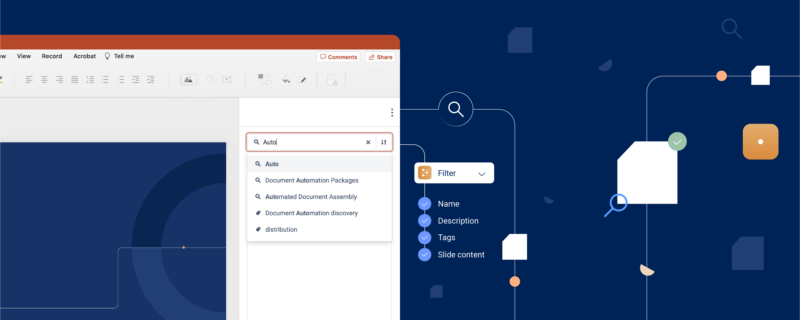Remote onboarding is here to stay – at least for a while. It’s not good news for everyone; starting a new job is a nerve-wracking time for most people, and there’s a whole new level of added stress when this has to take place virtually.
A new way of onboarding
Where organizations aren’t going to be in their physical workplaces on regular hours for some time yet, it continues to have an impact on all areas of company life – including how new hires join the company. Remote onboarding means that the entire process of joining the organization, meeting people, and learning how to do your new job has to happen differently. It’s not as simple as just doing everything you would do for office-based onboarding over a video call, however, as the process needs to be thought out to ensure new hires experience as much of the typical experience of joining a new company as possible. The chats and small talk and technical set up are just as much a part of onboarding as learning what your role entails is! In particular, remote onboarding often requires that a lot of things that happen even before the first day, so that you’re all ready to go on day one.
Experiencing Templafy's remote onboarding
We spoke to Anton Sigurdur Sigridarson, Templafy’s Director of Inside Sales for EMEA and APAC, who was not only personally remotely onboarded himself but also participates in providing remote onboarding for new hires, to find out his thoughts on the matter:
“In the current climate, we face the situation of transitioning new hire onboardings online. The mentality we have to keep in mind is that the process and the learnings are the same at the core, just within different “walls”. The key thing for all onboardings is to create high engagement across different forums and reverting to online actually facilitates this process, as you can both save time and make sure you provide the same onboarding experience across the globe where all participants, no matter where they sit, can excel at the tasks at hand, which is to create a strong learning experience throughout the first few weeks for new team members”.
The following list is based on the approach we take with remote onboarding here at Templafy, but it’s likely that other organizations will act similarly. Hopefully, by understanding what a ‘remote first day’ will feel like and include, this can settle your nerves and help you know what to expect so that you’re ready to go and filled with excitement for the next stage of your career!

1. Introductions
Remote onboarding means new employees can feel like they are missing out on one of the most important parts of starting a new job: getting to know your new colleagues. Without the opportunity to make small talk around the office, it can seem like a mammoth task to get to know your colleagues. When you’re being onboarded remotely with Templafy, you will be (virtually) introduced to some teammates before day one. This allows you to feel like you know them a little more and on a less formal level before you begin, which should make having meetings with them less intimidating. It also gives you an opportunity to ask about anything that’s pressing early on, so you feel comfortable and ready to go.
2. Technical setup
As your technical equipment will have to be delivered to you, the team will take the time to set you up and support you with this before your first day – allowing them to solve any difficulties or tech issues that may arise. When your first day does roll around, you won’t need to worry about having technical issues with no one physically there to help, as you know you are already set up and technically able to do everything you need.
3. Onboarding schedule
Your onboarding schedule will be sent to you beforehand, so you can be sure that you will be able to make all the important meetings. We know that remote working means people are in a variety of places with distractions that can’t always be avoided. By having your schedule ahead of time, you will hopefully be able to arrange things so that important meetings have priority, and you know how to arrange your time.
Similarly, the onboarding schedule itself will feature a mix of meetings about the company together with other new employees and department-specific training. Through this, you can get to know people in the wider organization as well as the people you will be working closely with. It’s especially helpful in larger organizations where it’s not possible to get to know every employee personally, as it helps new employees feel involved and familiar with others nearly as quickly as they would in a physical office.
4. Getting to know people
Whenever new employees start, we encourage current employees to reach out and welcome them, but even more when they’re joining remotely. New employees can expect to be contacted in a variety of ways, from LinkedIn messages to emails and Slack messages, meaning that they won’t feel that they’re missing out on the in-person experience of meeting their colleagues. It’s a good idea to set up more informal calls to chat with some of them, especially if you’re going to be working with them so that you can feel like you get to know them a little more than you would otherwise. Similarly, there are regular team check-ins where you have a shorter informal chat with your team and these are great for feeling like part of the team from afar.

5. Experiencing other meetings
New employees often get invited to join in with calls and virtual meetings that are taking place in other teams or departments. This helps the osmotic learning experience which happens in a physical office setting, as hearing what goes on and how other teams are interacting and communicating is often a key component of feeling more at home in a new office space. It’s also yet another way in which you can get to know the people around you, and further your understanding of how processes within the organization work.
Ensuring success
Aside from the planned factors to have in set in stone for onboarding, Anton sums up the most important things to remember if you’re the one leading a remote onboarding session:
“The key things to remember are: Have ground rules for online session etiquette, create engagement through participation and inclusion, make every moment a coaching moment and most importantly - cultivate personal approach towards the individuals partaking in the process.
And as always, be kind and understanding that this is a new reality for a lot of people. I can personally testify that our most recent onboardings that have taken place on-line have been some of the best ones I have been a part of.”
There’s no perfect way to remotely onboard, but we’ve found that ensuring the above factors are in place creates a great starting point to ensure new employees feel welcomed and can quickly settle into their new roles. It takes time for anyone to settle into an organization and making the onboarding process as easy as possible is beneficial for both the new employees and the entire organization. We love welcoming new members to our team, whether it’s in real life or remotely, and we all do our utmost to make the experience as easy and enjoyable as possible – both in person and remotely.






